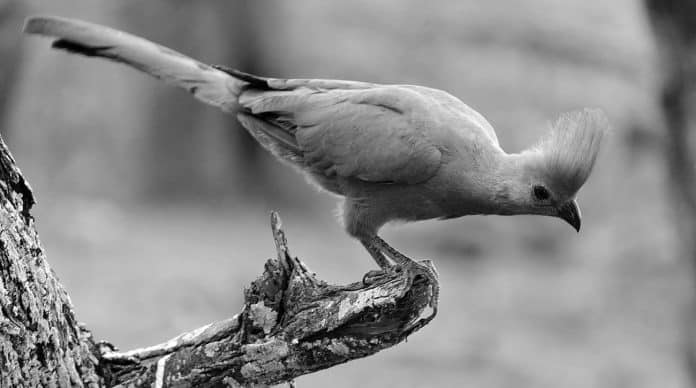Gray Go-Away-Bird in Tanzania: The Unmistakable Voice of the Bush
Introduction to the gray go-away-bird
The gray go-away-bird in Tanzania, scientifically known as Corythaixoides concolor, is a striking bird species found in the beautiful country of Tanzania. With its unique appearance and unmistakable voice, this bird has captured the attention of birdwatchers and nature enthusiasts from around the world. In this article, we will embark on a journey to explore the habitat, physical characteristics, behavior, and conservation status of the gray go-away-bird in Tanzania, all while unraveling intriguing facts and folklore associated with this captivating species.
Habitat and distribution of the gray go-away-bird in Tanzania
The gray go-away-bird is primarily found in the woodlands and savannas of Tanzania, particularly in the eastern and southern regions of the country. These birds are well-adapted to a variety of habitats, including acacia woodlands, riverine forests, and even urban areas. They are known to form small flocks and can often be spotted perched on the branches of tall trees, scanning their surroundings for food and predators.
Physical characteristics and unique features of the gray go-away-bird
The gray go-away-bird is a medium-sized bird, measuring around 48 centimeters in length. Its most distinctive feature is its vibrant plumage, which consists of shades of gray, white, and black. The bird has a large, crested head with a distinctive black eye mask and a long, pointed bill. When in flight, the gray go-away-bird reveals its striking orange-red underwing coverts, which contrast beautifully with its gray body. These unique physical characteristics make the gray go-away-bird easily recognizable and a delight to observe in the wild.
The unmistakable voice of the gray go-away-bird
One of the most intriguing aspects of the gray go-away-bird is its vocalizations. Its name is derived from its distinct call, which sounds like a loud and repetitive “go-away.” This call is often heard echoing through the woodlands of Tanzania, serving as a territorial call or a warning signal to other members of its flock. The gray go-away-bird is known for its vast repertoire of calls, including whistles, clicks, and screeches, all of which contribute to its unique vocal identity in the bush.
Behavior and feeding habits of the gray go-away-bird
The gray go-away-bird is a diurnal species, meaning it is active during the day. It is often seen perched on the upper branches of trees, where it feeds on a variety of plant matter. These birds have a particular fondness for fruits, especially figs and berries, but they also consume leaves, flowers, and even nectar. The gray go-away-bird uses its strong bill to break open fruits and extract the nutritious pulp. It is also known to supplement its diet with insects, including caterpillars and beetles. Despite being primarily herbivorous, the gray go-away-bird’s opportunistic feeding habits allow it to adapt to changing food availability in its habitat.
Conservation status and threats to the gray go-away-bird population
The gray go-away-bird is currently classified as a species of least concern on the IUCN Red List, indicating that its population is stable and not facing immediate threats. However, like many other bird species, the gray go-away-bird is susceptible to habitat loss due to deforestation and urbanization. The conversion of woodlands into agricultural land and the illegal pet trade are also potential threats to their population. It is crucial to raise awareness about the importance of conserving the natural habitats of the gray go-away-bird and implementing sustainable practices to ensure its continued presence in Tanzania.
Best places to spot and photograph the gray go-away-bird in Tanzania

Tanzania offers several excellent locations for observing and photographing the gray go-away-bird in its natural habitat. One such place is the Serengeti National Park, known for its vast savannas and abundant wildlife. The Tarangire National Park, with its diverse landscapes and baobab trees, is another hotspot for spotting these birds. The Ngorongoro Conservation Area and Lake Manyara National Park are also frequented by the gray go-away-bird. Remember to bring your binoculars and camera to capture the beauty of these birds as they perch high above on the treetops.
Interesting facts and folklore about the gray go-away-bird
In addition to its striking appearance and vocalizations, the gray go-away-bird holds a special place in the folklore of Tanzania. According to local beliefs, its call is said to bring good luck and ward off evil spirits. Some tribes even consider the sighting of a gray go-away-bird as a sign of prosperity and abundance. This folklore reflects the cultural significance of this bird in the lives of the people of Tanzania and adds to its mystique and charm.
How to contribute to the conservation of the gray go-away-bird
If you are passionate about bird conservation and want to contribute to the protection of the gray go-away-bird, there are several ways you can make a difference. Support local conservation organizations that work to preserve the natural habitats of these birds. Spread awareness about the importance of protecting the woodlands and savannas of Tanzania. Additionally, consider participating in eco-tourism activities that promote sustainable practices and provide economic benefits to local communities. By actively engaging in these efforts, you can help ensure a bright future for the gray go-away-bird and other avian species in Tanzania.
Appreciating the beauty and significance of the gray go-away-bird in Tanzania
As we conclude our exploration of the gray go-away-bird in Tanzania, it becomes evident that this species holds a unique place in the country’s biodiversity. Its vibrant plumage, unmistakable voice, and cultural significance make it a bird worth appreciating and protecting. By learning about the habitat, physical characteristics, behavior, and conservation status of the gray go-away-bird, we can deepen our understanding of the intricate web of life that exists in Tanzania’s woodlands and savannas. Let us continue to cherish and conserve these natural treasures for generations to come.
For more articles related to Wildlife in Tanzania (Animals), click here!


































